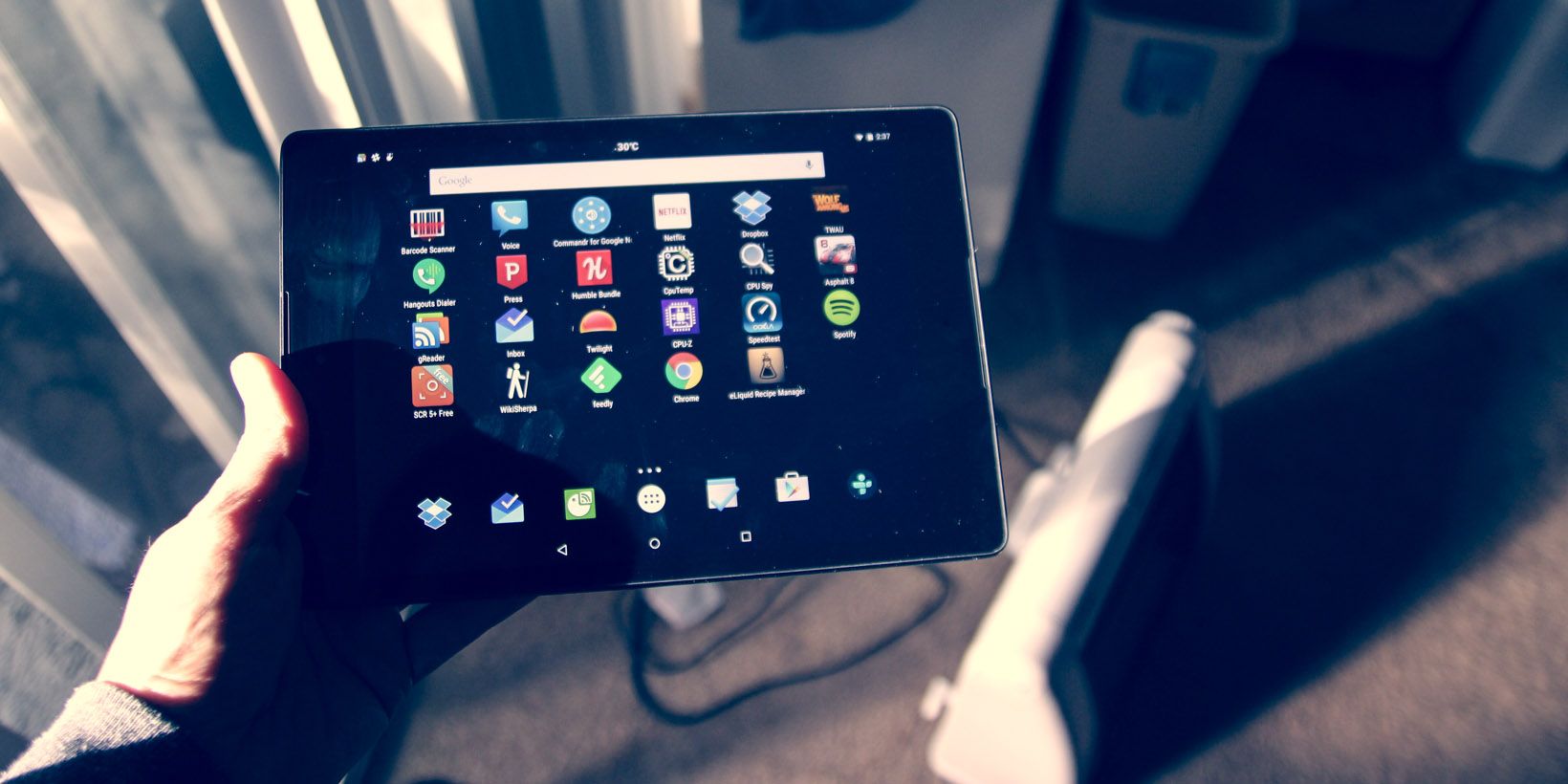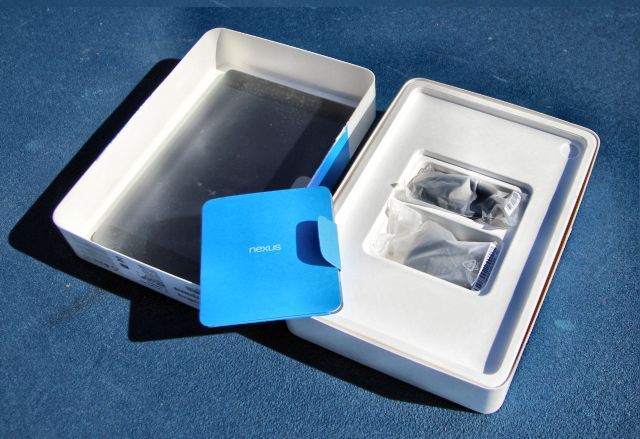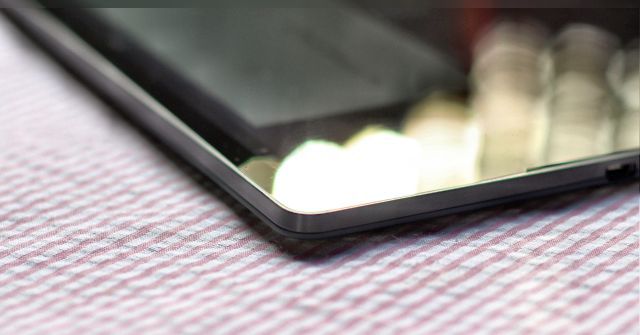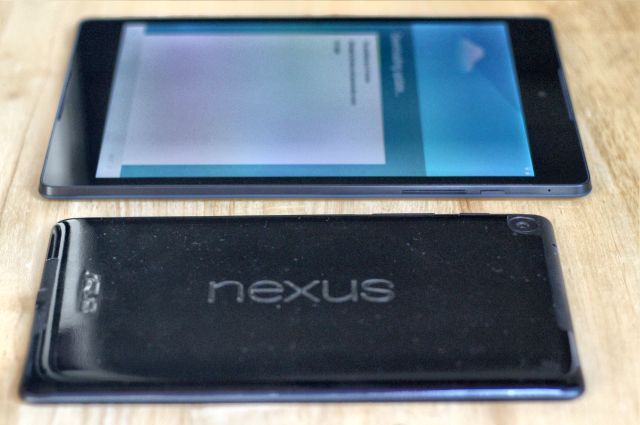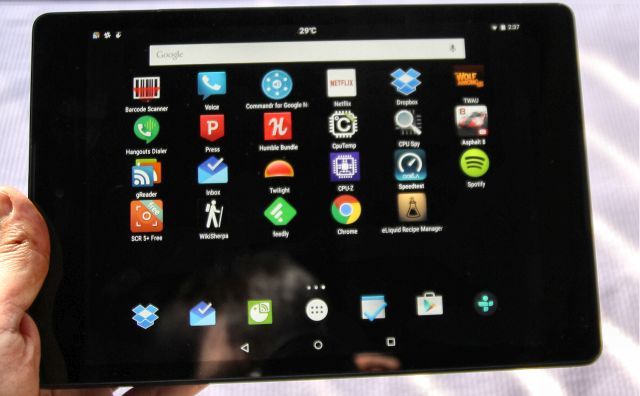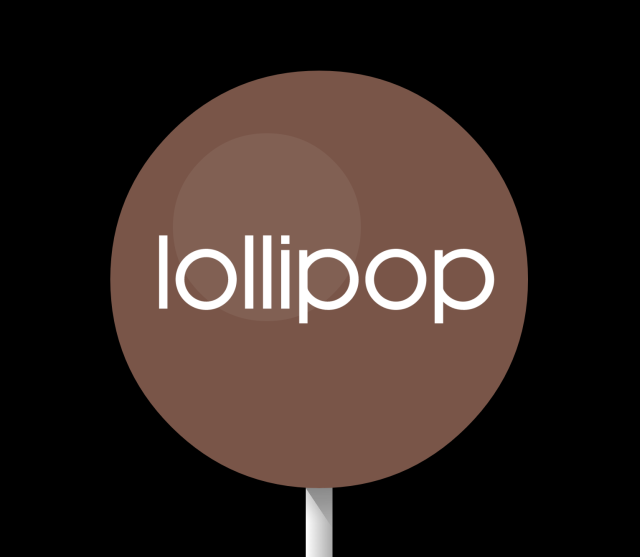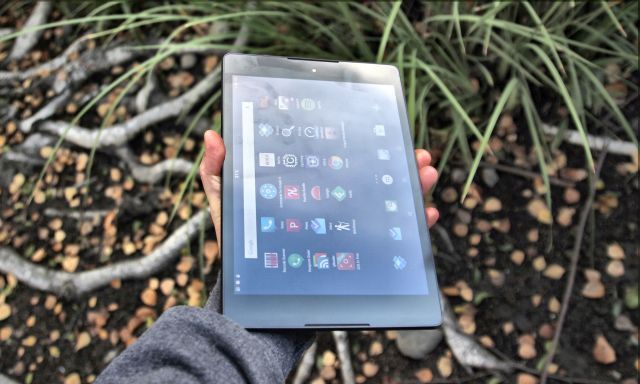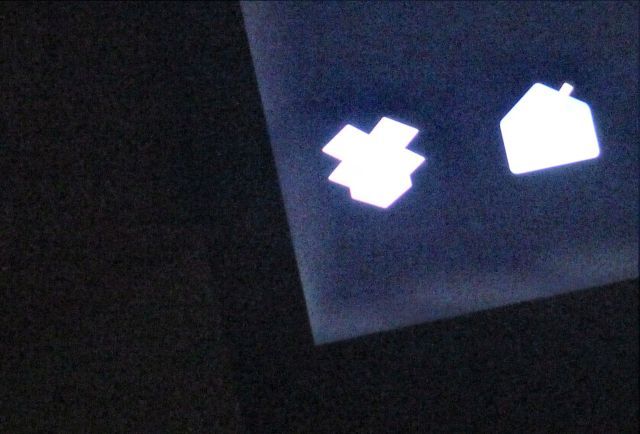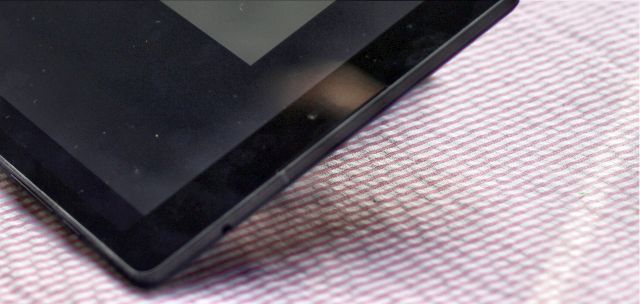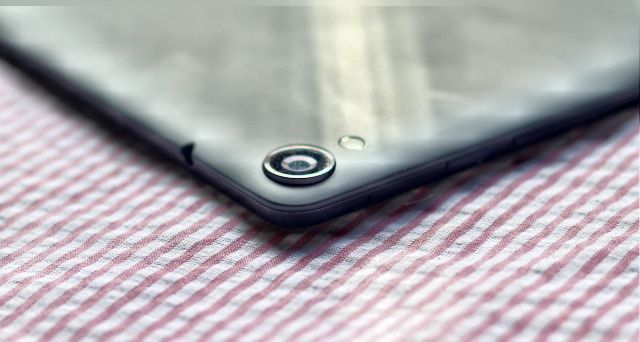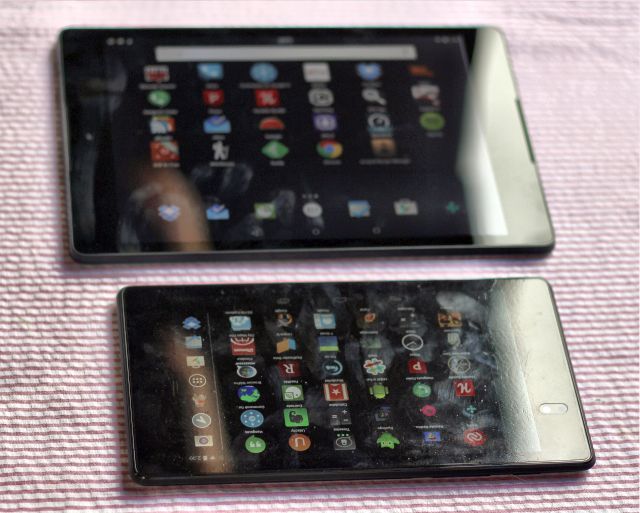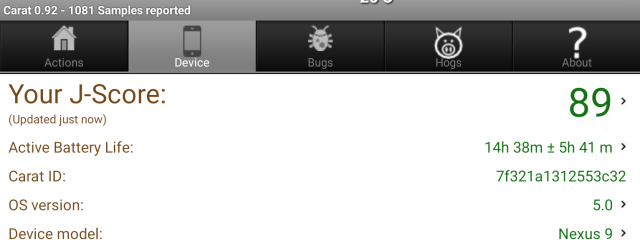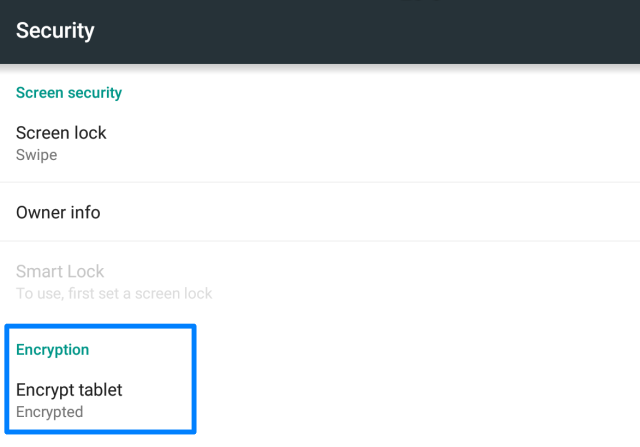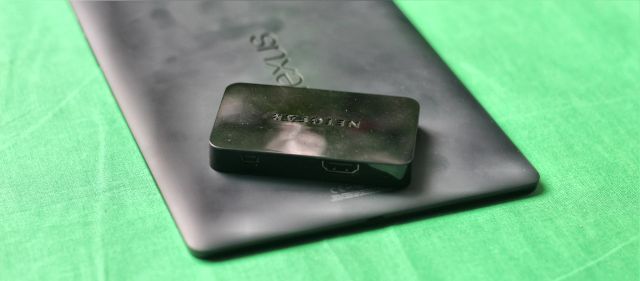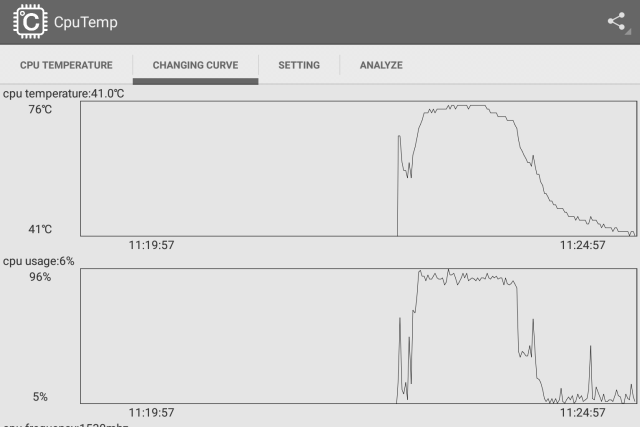HTC Nexus 9 Tablet
It's a tough choice. For value-oriented consumers, don't buy it. For developers, high-end consumers, and early adopters, buy it. The Nexus 9 offers better features (such as screen-off Google Now access) than comparable tablets by Apple and Samsung. It also lacks microSD storage. In terms of features, screen-off Google Now is fantastic and the performance is excellent. Keep in mind that NVIDIA's Shield is now $200 and is a great budget option.
The Nexus 9 just landed, and it's hot – both in terms of newness, and temperature. It offers the beefiest specs in the Android world, along with a near doubling of prices over yesteryear's models – but does the $399 HTC Nexus 9's cutting-edge components justify its steep price increase?
Competition
In the tablet world, competition in the ~9-inch tablet space burns fierce – manufacturers have saturated the market with with all manner of devices. The vast selection of high-end tablets covers all operating systems, including Android, Windows 8.1 and iOS. The best of these include the $399 Samsung Galaxy Tab S 8.4, the $399 Apple iPad Air and the $499 Air 2. On the low-end of the spectrum lies the ~$240 LG G Pad 8.3 (our G Pad review).
While all of these devices will get the latest flavor of Android – Lollipop – the Nexus 9 is the first to arrive with it pre-installed.
Aesthetic Design
At first glance, the Nexus 9 comes off as a larger version of the 2013 Nexus 7. In build quality, the Nexus 9 looks and feels great – save for the lamentable design of the rear matte plastic case. While it feels solid and easily gripped, the build quality won't impress. At the bottom of the tablet, near the microUSB charger, the plastic rear shell creaks under light pressure. The center of the back actually gives in when lightly pressed. This doesn't present a deal-breaking flaw as the structural weakness affects non-critical portions of the tablet; you won't need to worry too much about crushing a CPU die through semi-rough handling.
The Nexus 9 comes in two colors: Black and white. The model in my possession features a slightly off-black shell, along with a brushed metal bezel. The bezel doubles as a wireless antenna and bolsters grip. The edges of the device slope downward, allowing users to more comfortably hold its edges.
Hardware Design
- CPU: NVIDIA Tegra K1 "Denver" dual-core CPU rated at 2.3GHz
- GPU: NVIDIA Tegra 192-core Kepler
- OS: Android 5.0 Lollipop
- Display: 8.9" IPS LCD 2048x1553 4:3 aspect ratio with Gorilla Glass 3
- RAM: 2GB RAM via Micron
- Memory: 16GB or 32GB eMMC storage via Samsung, without microSD card support
- Wireless: NFC, Bluetooth 4 and 802.11ac. There's also an LTE model
- Dimensions: 7.95mm (thickness) and 425g (weight)
- Battery: 6700 mAh, not user-replaceable and no wireless charging
- Audio: 2x small, front-facing speakers; 2x microphones
I won't go too much in detail into the inner-workings of the Nexus 9. Thanks to iFixit's brilliant teardown of HTC's tablet we know several things: First, HTC crammed a cutting edge chipset and high-quality screen into the Nexus 9. Second, they cut so many corners on the Nexus 9 that one might expect the tablet to look circular, rather than rectangular.
The 16GB eMMC module, a soldered on flash storage device, is the same used in the Samsung Galaxy Tab 3 10.1, which released over a year ago. The module adheres to the older eMMC 4.5 spec, which specifies bandwidth speeds in the 200MB/s ballpark. Google and HTC ignored the latest in eMMC modules, with speeds approaching that of desktop Solid State Drives (What's an SSD?). The odd stutter and jitter experienced during disk-intensive operations may be due to the mismatch between the old memory module and the bleeding edge processor. However, reports from the field indicate the stutter comes from a firmware bug.
HTC should have used Samsung's eMMC 5.0 modules; its omission suggests rampant cost-cutting. The lack of wireless Qi-charging is another indicator. Another design shortcoming: HTC's decision to use a bare-minimum 2GB of RAM on a 64-bit system. Ideally, 3-4GB of memory should have been used.
Hardware Analysis
The dual-core NVIDIA K1 Denver system-on-a-chip uses the latest in ARM architecture: the ARMv8-A. ARMv8 offers encryption support, 32 and 64-bit architecture support and overall faster and more energy efficient performance than the previous ARMv7. To date, only Apple's A7 chip provides similar cutting edge specs.
The decision to wield two big cores, over four smaller cores, paid off – the performance-on-paper of the Nexus 9 eclipses its competitors. The benchmark software AnTuTu rates the Nexus 9 among the highest performing (if not the highest) devices within the Android ecosystem. While some might question HTC's chipset choice, multithreaded performance in the mobile sphere always comes in second place to single-threaded. Years from now this will change. But into the foreseeable future, faster dual-core processors will dominate slower quad cores in real-world performance.
The Nexus 9's 2x2 MIMO 802.11ac wireless trumps many tablets on the older wireless-N standard. Even on the 5GHz broadcast spectrum (what's a dual-band router?) the transmit range isn't much different than the 2013 Nexus 7. This owes in part to the use of 2 different streams in addition to the mostly plastic construction and the antenna band, which doubles as a bezel. While wireless-AC is faster than the older N standard, most users will be bottlenecked by their own Internet connection.
The main advantage of 802.11ac is that it transmits data faster, at the same power consumption, as the older standard – so in most cases, users will notice a sizable increase in battery life while using the device to either stream media or browse the web. Unfortunately, a firmware bug in Lollipop appears to cause undue battery drain while browsing. Google claimed to fix this issue in the latest firmware update. This update failed on my tablet, unfortunately (but eventually installed itself).
Making Use of the Nexus 9
I used the Nexus 9 as my daily driver since launch, on November 3rd. I used it for phone calls, navigation, RSS (what's RSS?) radio shows, movies, music, gaming and more. In combination with the Karma wireless hotspot (our review of Karma), all WiFi devices can function as phones. The Nexus 9's screen-off Google Now functionality is a fantastic addition. Currently, no other device on the market comes even close in terms of flexibility. Samsung tablets do offer infrared emitters, though.
I previously used a 2013 Nexus 7 as my main device – a role which required its screen remain on, since it lacks screen-off voice recognition. In comparison, the Nexus 9's real-world battery life can get me through an entire day, without worry. Like the Nexus 7, the Nexus 9 includes On-The-Go (OTG) cable support, meaning it can work with USB devices in host mode, given the correct breakout cable. As in KitKat, the Nexus 9 worked with the Playstation 3 controller, but only partially with a Logitech Rumbleshock 2. It also paired with a mouse and keyboard, with no issue.
A surprising feature of the Nexus 9: dual microphones are superb for use as a speakerphone. I found that both the audio and microphone sound quality from calls using Google Hangouts beats both my smartphone and Nexus 7 2013 tablet. On the downside, Google Now does not seem to activate with the same accuracy as on the Nexus 7. Even with the latest firmware update (LRX21R), the voice recognition often requires repeating the activation phrase.
Google Now suffers from several other issues. First, it does not yet support sending SMS messages using voice recognition. This will get fixed over time, as SMS integration occurred just a few months ago. Second, screen-off access to Google Now is flaky. After an indeterminate amount of time, the Google Now functionality just stops working. No amount of shouting at the tablet will activate it.
Android 5.0 Features
Android 5.0, Lollipop brings the largest update of the Android operating system since the jump from Gingerbread to Ice Cream Sandwich. It brings improved security, 64-bit compatibility, better privacy options and a revamped visual interface. The most tangible change: Lollipop handles background tasks more efficiently, contributing to longer battery life. Anandtech reported that the update increases battery life by around 30%.
But for all its beauty on smaller displays, Lollipop doesn't look that great on tablets. The biggest issue with Android 5: All the icons and menus don't scale well at all. I found that the system tray looked better on the last version of Android: KitKat. And for all its purported performance improvements, Lollipop sometimes displays jarring screen transitions.
Screen Quality
Whether for reading or playing games, the Nexus 9 offers excellent (for the most part) performance. It remains a mystery why the older Nexus 10 included a larger screen with higher pixel density, two years ago. Even so, by today's standard, it offers better screen specs than most of its competition.
The IPS screen offers good color representation, vibrancy and contrast – but pixel density, measured in pixels-per-inch, falls short of the competition at 281 PPI. The Samsung Galaxy Tab S 8.4 features an OLED screen, which reduces eye-strain and offers better contrast between colors and blacks. The Galaxy Tab S also features a semi-matte screen coating, giving it better daylight readability compared to the Nexus 9's untreated glass.
I'm of the opinion that screen technology doesn't need to improve any further than it already has; they should focus on efficiency. Instead, each increase in screen PPI has come with a proportionate increase in battery drain.
The Nexus 9's screen comes with a fair amount of light bleed – or clouding – around the edges of its screen. This occurs when watching content with dark backgrounds, on the highest of brightness settings. It also varies between individual devices. Some show distracting amounts of screen bleeding, others may not.
Sound Quality
The Nexus 9 offers some of the better audio quality out of all tablets I've tested. Its audio quality owes to HTC's use of dual, front-facing speakers. However, it was falsely reported that HTC used its Boomsound technology inside of the Nexus 9 -- the iFixit teardown reveals two relatively small speakers. The sound quality is due entirely to their positioning, rather than any technical merits.
Camera
I won't delve too far into the 8MP camera. It doesn't employ optical image stabilization and the camera does not appear to be the same as used on the well-regarded Nexus 6. It performs on par with what you would expect from a high-end tablet, meaning it takes basic pictures and includes an LED flash. If you need a solid camera, try going with Apple's iSight technology, found on the iPad Air 2 (among other devices). For the majority of users, the camera exists as a productivity tool – it scans documents and barcodes.
Performance
At the heart of the Nexus 9 is the dual-core 64-bit Tegra K1 "Denver" chip, which offers significant performance gains over it's quad-core 32-bit sibling.
App performance varies between programs, but operating system performance will be snappier on Denver. Larger cores tend to outperform smaller, but more numerous, cores.
Its gaming performance – while theoretically impressive – won't differ much from the 2013 Nexus 7, with its underclocked Snapdragon 600. Some of the more graphically intensive games such as The Wolf Among Us, which introduce microstutter on the Snapdragon 600, will run flawlessly on the Nexus 9. The majority of modern hardware, however, will perform on an equal level. The truth is that mobile games are designed for devices with relatively weak specifications. There are no games on mobile which will max out the Nexus 9's Tegra K1. This is something of a blessing, as the Denver chipset can hit 64 degrees C – outrageously hot. HTC dropped the ball on its heat distribution system and your fingers will feel this first-hand when gaming and surfing the web.
Battery Life
Expect excellent battery life from the Nexus 9. In my own testing, gaming with brightness at medium settings and all wireless features turned on, the Nexus 9 gets around 4.5 hours of hardcore use. It scores in the 89th percentile in my favorite battery analysis app, Carat (here's four battery analysis methods). PhoneArena rates the tablet at around 9.5 hours, beating out all its competitors within the premium tablet space. PC Advisor found that the Nexus 9 reached 11 hours of video playback. Most battery tests showed the Nexus 9 possessed best-in-class battery life.
The battery life could owe, in part, to an unreferenced component on the Denver chipset. So far, the tablets and smartphones offering Google Now with the screen-off include the 2013 and 2014 models of the Motorola Moto X. To date, all implementations of screen-off Google Now feature rely on a proprietary technology from Qualcomm known as a "natural language" Digital Signal Processor (DSP), which uses special, low-drain "listener" cores to process vocalized commands. The advantage of a listener core is that it offers always-on voice recognition with very low battery drain.
The tell-tale indicator that the Denver chipset includes a listener core: screen-off Google Now voice recognition works, even when the tablet's cores are sleeping. One could attribute this to a flaw in CPU-spy, but given the long battery life, I'd speculate that a third or even fourth DSP core exists. NVIDIA's Tegra chipset – since Tegra 3 – has always included an extra, low-drain core, for handling background processes while idle, so it's not much of a leap to suggest Denver includes this technology.
The potential reasons for secreting a language processing DSP are scant – my understanding of screen-off Google Now in the Moto X series is that Qualcomm (and Texas Instruments) owns a large number of patents on natural language processors and DSPs. HTC and NVIDIA may have somehow circumvented this patent and then obfuscated its implementation.
For whatever reason, the screen-off Google-Now access turns the Nexus 9 into the best productivity-oriented tablet on the market. Unfortunately, Google Hangouts hasn't yet been integrated into the Google Now, so touchless SMS won't work.
Baked In Encryption
A major advantage of the Tegra K1 Denver chipset is that it offers AES-based hardware encryption. We haven't seen the Denver chip under a microscope, but early impressions suggest it utilizes a dedicated ARM core for handling encryption (similar to the ARM TrustZone technology). Unlike other encryption schemes, users won't need to input a passcode, and there's almost no performance loss. Devices that don't offer hardware encryption suffer from performance loss related to disk writes.
I have heard anecdotally that the Nexus 9 may not use hardware encryption – in this case, it would offload encryption overhead to the CPU, which could explain the Nexus 9's woeful overheating issue and strange stuttering during disk-intensive operations.
Miracast
I tried testing the Nexus 9 as a Miracast-based desktop. Miracast (now referred to as "Screencasting" or "cast screen") allows users to mirror their Nexus's screen on a television or computer monitor, with the help of a Miracast adapter. Unlike previous versions of Android, users don't need to turn on screencasting – it's available direct from the system-tray. Unfortunately, the Lollipop update appears to have broken wireless display compatibility – I couldn't get the Nexus 9 to even recognize the presence of my Netgear PTV3000.
Prior implementations of Miracast for Android devices suffered from numerous issues with lag. It also interacted poorly when simultaneously using a Bluetooth device, particularly mice. Google or Netgear will most likely push out a firmware update in the near future to address both these issues, but for now it remains untested.
Temperature
The industry term for the temperature of a tablet's surface is "skin temperature". Devices that feel hot to the touch often turn consumers away. An all-metal device, combined with a hot chipset will display higher skin temperatures than one constructed from plastic: metal conducts – and dissipates – heat better than plastic.
From iFixit's teardown, we know that HTC elected to deal with the Denver chipset's heat production by using a heat spreader combined with a rather large copper "shield". This helps reduce heat buildup in any single location and spreads it evenly over a wider surface area.
After a very short period of intensive gaming, the area near the camera becomes uncomfortably hot. Using a temperature sensor app reveals that the Nexus 9 employs a very aggressive form of thermal throttling. When the Nexus 9 hits somewhere around 50C, it underclocks the CPU to 1,530MHz.
The latest firmware update seems to have diminished the Nexus's scalding temperatures. The hottest the tablet got was 71C after updating to LRX21R.
Is the Nexus 9 Worth Buying?
Two similarly sized tablets make the Nexus 9 a hard sell: the Apple iPad Air and the Samsung Galaxy Tab 2 8.4. Both offer better build qualities with fewer flaws, and at the same price. On the downside, the TouchWiz user interface on Samsung devices dampens the user experience; while switching to the Apple ecosystem is an expensive proposition for existing Android users.
Serious Problems
- Light bleed
- Mediocre build quality
Worthwhile Features
- Screen-off Google Now
- Double-tap to wake
- One of the fastest CPUs and GPUs for Android
- High resolution screen
- First device with Android 6.0
If Google wants to charge premium prices, it needs to deliver a premium product. The HTC Nexus 9 falls short of premium in build quality, but it delivers in terms of features. What a lot of reviewers aren't understanding is that the Nexus series functions as a reference platform suitable for app developers and early adopters. For these demographics, it's an excellent device.
Previous generations within the Nexus line suffered from teething firmware issues and manufacturing defects: The 2012 Nexus 7 used slow and cheap eMMC modules; the 2013 Nexus 7 suffered from touchscreen insensitivity; the Nexus 4's air-gap caused overheating; the Nexus 10's screen bled light. The Nexus 9 suffers from three of the four problems seen in previous Nexus lines, and it's just overpriced given its specs.
While the firmware bugs will get ironed out in short order, thanks to Google's frenetic updates, the hardware issues will plague the device until it finally graces a landfill.
So is HTC's Nexus 9 worth committing $399 to? Only for those the Nexus program caters to: developers and early adopters. Everyone else, particularly those looking to buy gifts for loved ones, should look toward Apple, Samsung or LG.
Update: November 2015
Battery Life: The Nexus 9's idle-state battery life rocketed to at least a week after the Marshmallow update. Some users report around a month of life, when the tablet goes unused. Basically, if you're not using the tablet, it won't bleed battery like it used to under Lollipop.
Marshmallow: It is currently the only tablet available this holiday season with a 6.0 update. Marshmallow looks just as bad as Lollipop did, although Google added some minor visual improvements. It also resolved Denver's jarring and uneven performance. It's now one of the smoothest running and fastest Android tablets available on today's market.
Temperature Issues: The Marshmallow update dropped temperatures across the board. The Nexus 9 still gets warm while gaming, but normally doesn't exceed 65C. It no longer self-immolates whenever it browses the web.
Google Now: Marshmallow also seems to have quelled most of the problems with Google Now. Voice detection accuracy has improved, along with overall better speed in detecting voice commands.
After the Marshmallow update, I also recommend the Nexus 9 to anyone looking for a high-end Android tablet. That's not to say that the Nexus 9 is perfect. It's just that the competition in the 9-inch premium tablet space is not any better than the Nexus 9. My change of heart is based on two things: First, the build quality of later production runs of the Nexus 9 were measurably better. Second, the Nexus 9's performance still beats out most of its competition. Keep in mind that the NVIDIA Shield is now $200, although it's only a 8-inch tablet.
[recommend]It's a tough choice. For value-oriented consumers, don't buy it. For developers, high-end consumers, and early adopters, buy it. The Nexus 9 offers better features (such as screen-off Google Now access) than comparable tablets by Apple and Samsung. It also lacks microSD storage. In terms of features, screen-off Google Now is fantastic and the performance is excellent. Keep in mind that NVIDIA's Shield is now $200 and is a great budget option.[/recommend]
How Do I Win The Nexus 9?
The winner will be selected at random and informed via email. View the list of winners here.
Send your products to be reviewed. Contact James Bruce for further details.

